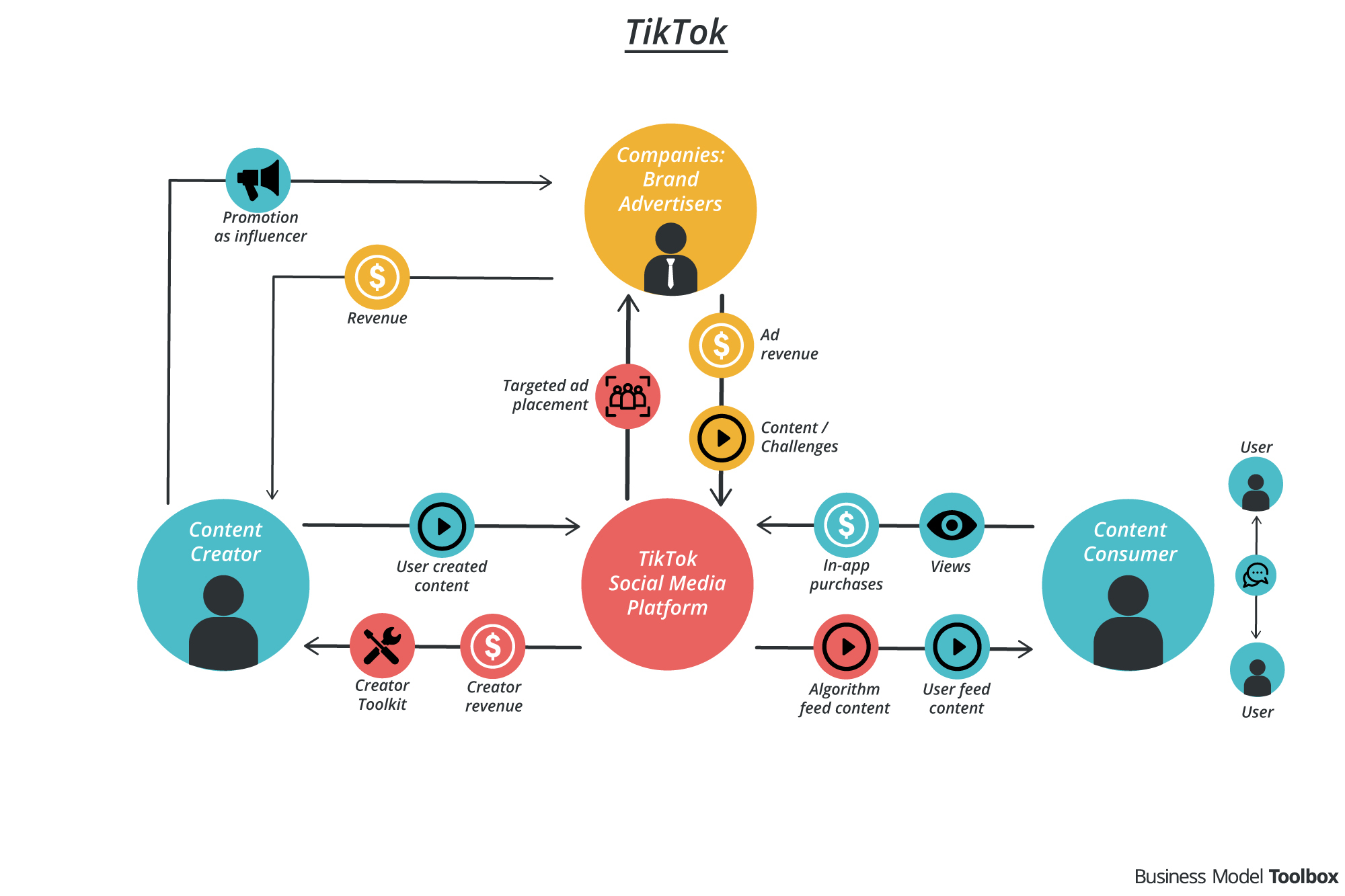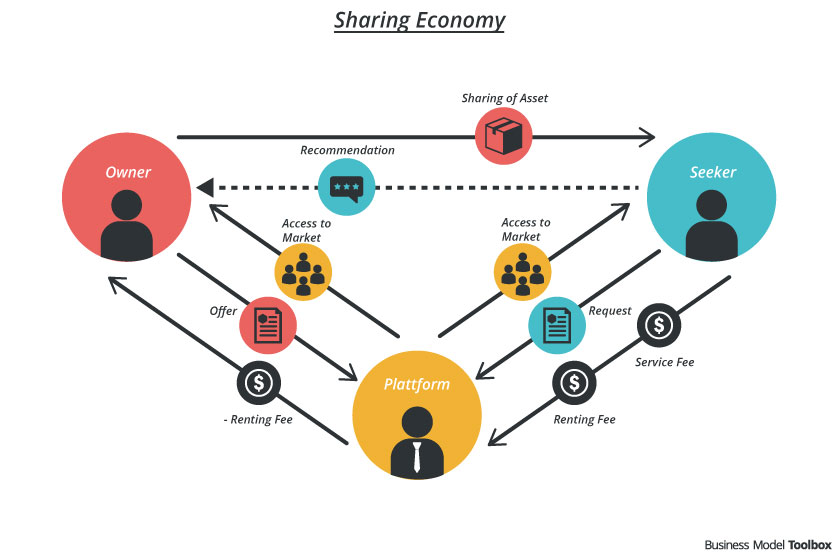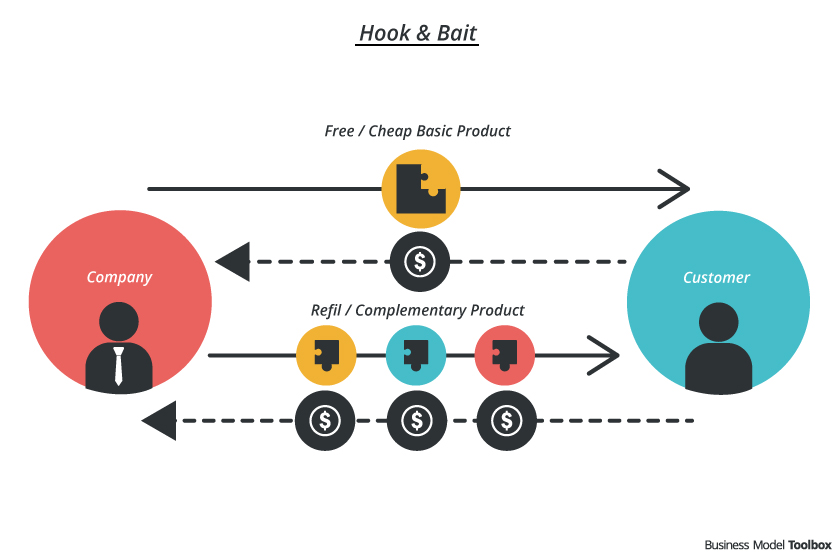TikTok is a social media platform where users share short self-made videos that express their creativity. Moreover the platform launches challenges to generate engaging and creativity.
Founded: 2017, USA
Tags
Story
The origins of TikTok can be traced to 2012, when its parent company ByteDance was founded by Chinese serial entrepreneur Zhang Yiming. ByteDance’s initial product success with Toutiao led to the opportunity for the company to create the video sharing app Douyin in 2016. Requiring only 200 days to be developed, within one year Douyin had obtained 100 million Chinese users that viewed 1 billion videos daily. To expand internationally and still abide by the internet regulations set by the Chinese government, Zhang launched a twin version of Bouyin, Tiktok, in 2017 on a separate server.
Within the same year, ByteDance acquired Musical.ly, another Chinese-based social video app, with more than 200 million users worldwide. Initial Musical.ly and TikTok operated in parallel to one another. In 2018, Musical.ly users’ accounts were consolidated into TikTok’s platform. Within three months the combined TikTok platform had obtained 30 million new users.
In 2020, TikTok is estimated to have around 825 monthly active users worldwide.
Business Model
Value Proposition & Customer:
TikTok social media app that functions as a multi-sided platform, consisting of content creators, viewers, and brands. The platform offers a space where users can easily become inspired to explore and publish their own creative content. This has especially been well received in rural and poorer areas where individuals would otherwise have limited access to digital entertainment.
Unlike most social media platforms, TikTok users have two social feeds. One for recommended content from the platform’s algorithm and another for shared content from profiles followed by the user. This combination provides users with a larger variety of content.
The relationship between content creators and viewers is reinforced with the virtual gift shop. Creators give viewers virtual gifts as a sign of their gratitude for the creators positive engagement with them. Creators can then convert these virtual goods into real money.
The creator marketplace allows advertisers to directly contact influencers who match their target market demographic. This direct relationship differs from other social media platforms where such influencer marketing agreements are handled by a third party.
Live streaming allows content creators to engage with their viewers more directly; during these streams, the platform also makes it simple for creators to auction products of theirs during the session.
Largely distinguishing TikTok from competitors however is its native in-app video editor. This functionality is constantly updated and allows all users to become creators, regardless of their amount of video editing experience. Due to both the short time it takes to both watch and make content on TikTok, consuming and creating become a seamless activity for users.
Helping these videos go viral are TikTok Challenges. Challenges are themed TikToks that circulate the app, encouraging users to apply their own creativity to create videos that match the theme for the Challenge. The music played in the background of Challenges are a key element that helps Challenges prolifically spread amongst users.
Mission & Value
TikTok’s mission is to inspire creativity and bring joy, as they lead the entertainment landscape in short-form mobile video. Beyond this, Zhang’s personal goal is to continue expanding TikTok as a ‘borderless’ company, which is likely to reflect in TikToks future collaborative features.
Value Creation:
Through TikTok’s continual focus to offer both in-house and integrated features to enable creators is unique.
Powering TikTok is its artificial intelligence technology. Unlike other popular social media and entertainment platforms, TikTok, users receive desired content without needing to explicitly search and select options. The success of its content placement is evident from the highly viral sharing behavior among relevant users.
The creator marketplace is enabled by the user data collected in-house. This allows analytics on influencers to be both exact and much more extensive than typical data collected on influencers from third parties.
Live streams are enhanced with TikTok’s integration of Teespring: a turnkey service that handles all of the backend of e-commerce. Creators only need to create a product – and Teespring handles the rest. Visitors can make purchases without leaving the app.
The music incorporated into Challenges is linked to Spotify; as such, the viral nature of the videos not only benefit the creator but also the artist of the song used in the challenge.
Revenue Model:
TikTok generates revenue from ad revenue and in-app gift purchases.
The ads function synonymously as those from other social media platforms: advertisers select their target demographic and TikTok places this messaging in front of the advertiser’s desired audience.
Gift purchases can be made when users convert their real money in exchange for TikTokens. A user can purchase 100 TikTokens for 99 cents.
Organisation:
TikTok’s company culture is reflective of the global reach of its product. With employees working in more than 30 countries, TikTok supports and open and flat hierarchical culture where individuals can be themselves. The company’s mission to empower creators also applies internally, encouraging everyone to ‘make a change as a TikTok employee.
Applied Patterns
Challenges
Positive Impact
- Algorithm promotes unknown creators instead of profiles with many followers, giving all users a chance to reach the world with their content
- Elimination of middleman in influencer marketing
- Democratization of digital entertainment
- TikTok for Good as a program utilizing TikToks’ creative resource to spread awareness of concerning topics
Negative Impact
- Perceived attraction of viral trends which may mask local cultural traditions
- The platform’s algorithm is subject to discriminating against certain content at an exponential scale due to its viral design
- The large amount of younger users increase the risk of advertising companies marketing towards minors



